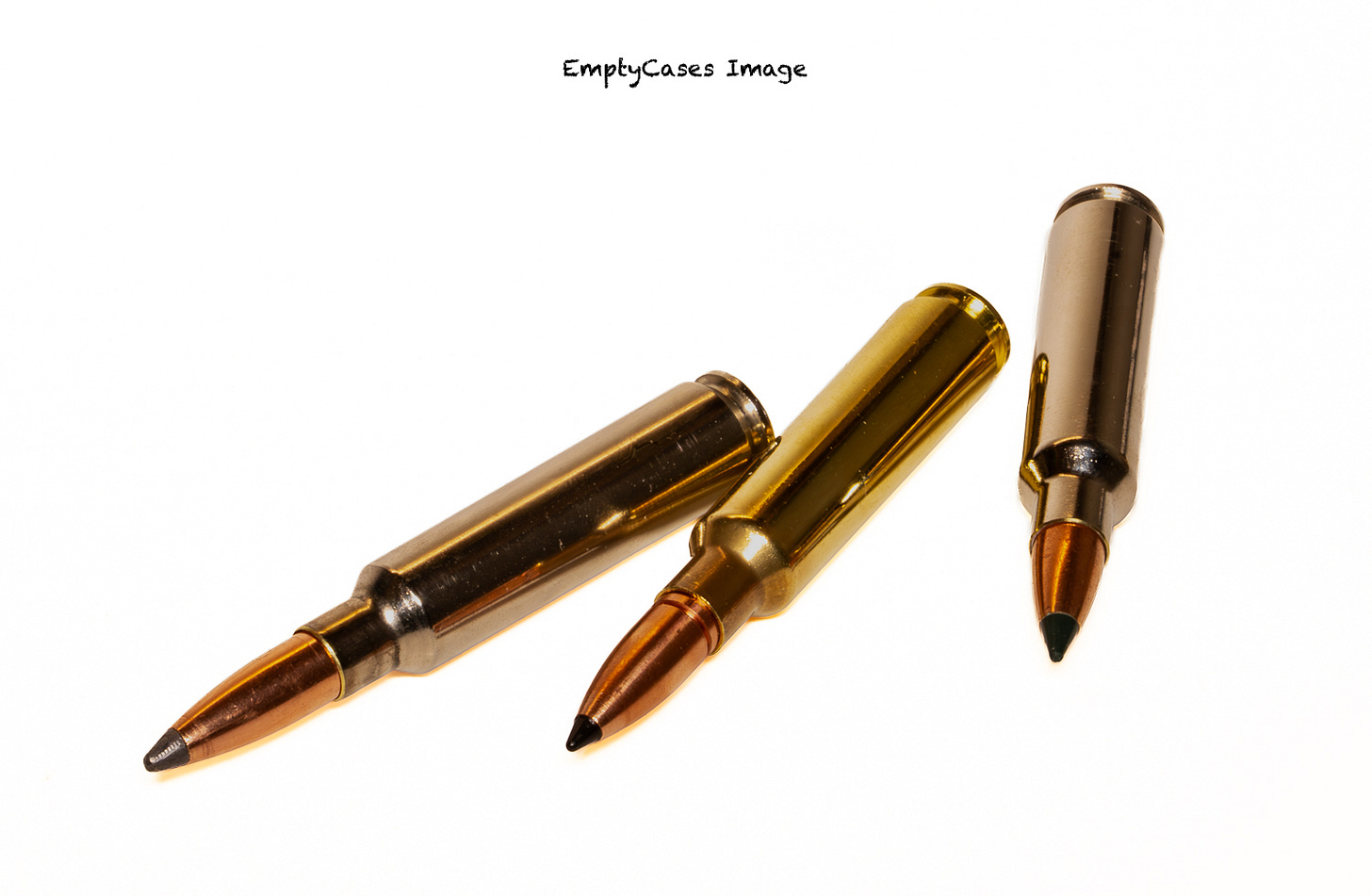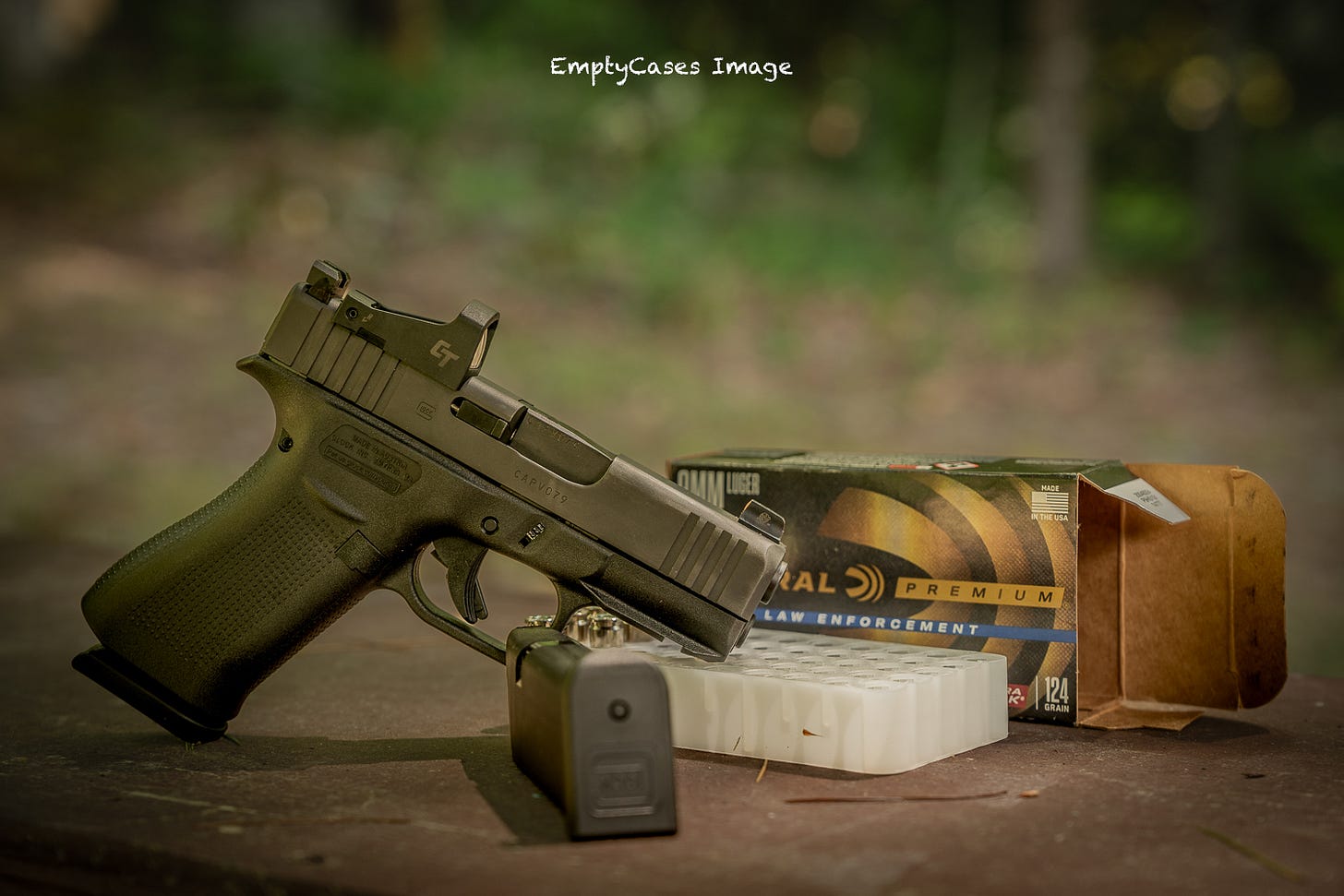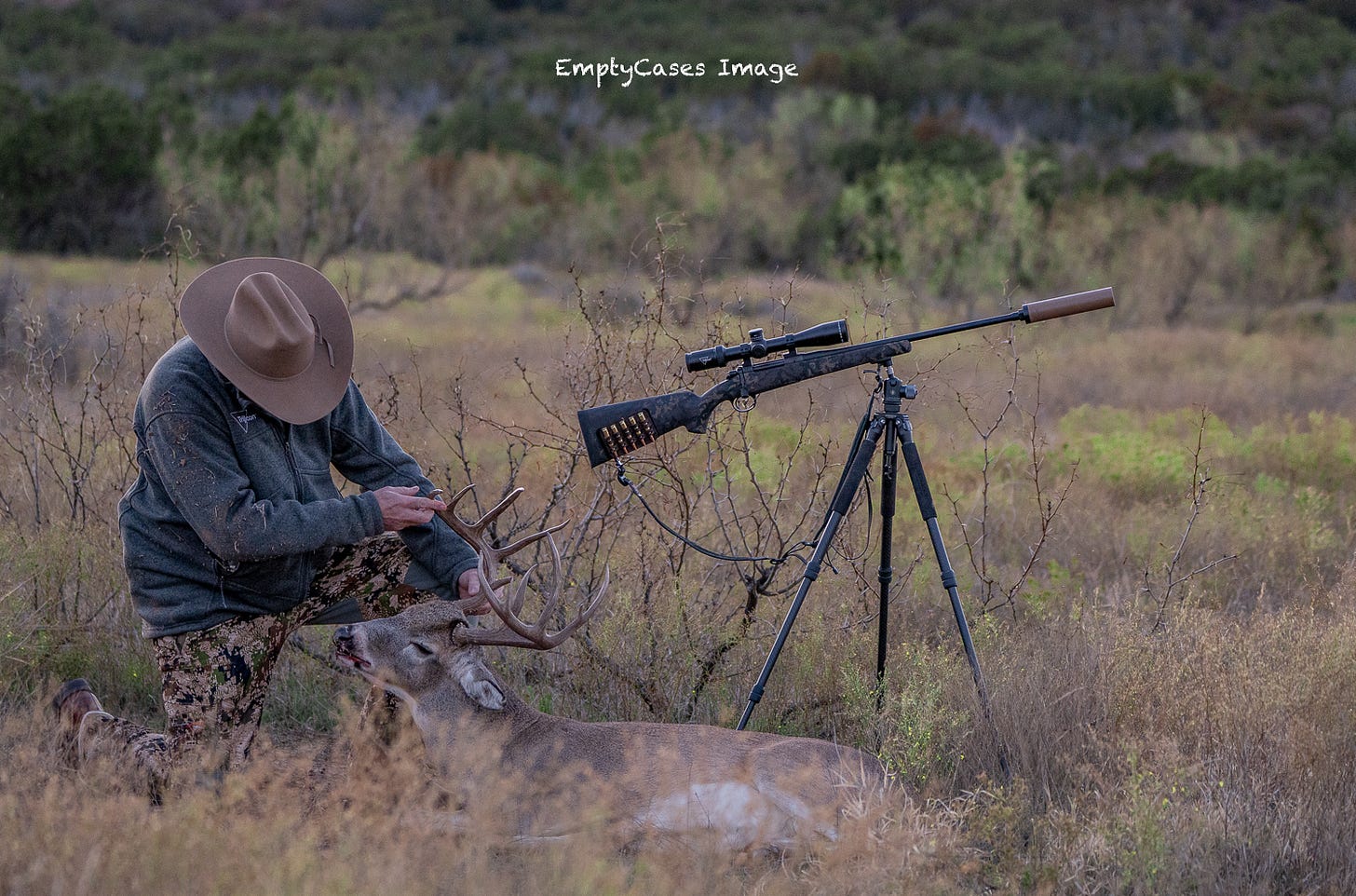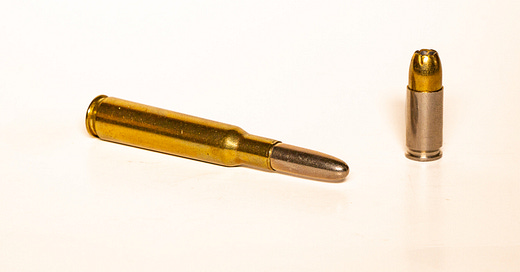If you look at the nearly two decade history of centerfire cartridges, in terms of performance and shootability we’ve not seen substantial advancement in more than a 100 years. With rifle cartridges for big game hunting, the 7x57 Mauser developed by Paul Mauser in 1892 has yet to be significantly eclipsed, and as for self-defense pistol cartridges, you could say the same about the 9mm Luger, which Georg Luger designed in 1901. Now, I know my fellow Americans will claim the 30-06 Springfield and the 45 Auto are better than both these cartridges, but the facts simply do not support that argument.
When it comes to the efficiency of a big game rifle cartridge or a self-defense pistol cartridge, in the end it all comes down to the effectiveness of the cartridge on animals or humans, tempered by the felt recoil. Now I don’t think anyone would argue the 7x57 Mauser can be as effective on big game animals out to the same distances that a 7mm PRC can. Similarly, no one with any reasonable intelligence would suggest a 9mm Luger has the same terminal effeteness and reach as the 10mm Auto. However, out of a nine pound rifle the 7mm PRC will recoil with about 70% more force than a 7x57, and when fired from a steel framed 1911, the 10mm has more than twice the recoil impulse of a +P 9mm Luger. Long term, few humans are willing to accept the additional punishment of the more powerful cartridges for the assumed added effectiveness and reach they offer.
Rifle Cartridges for Big Game Hunting
History pretty much proves this. All we must do is look at what has been popular over the last century. Since WW I Americans have heralded the 30-06 as the preeminent big game cartridge. And, up until about two decades ago, most non-custom and affordable big game rifles – once outfitted with a riflescope – weighed in at about nine pounds. From a nine pound rifle the 30-06 will generate about 20 foot-pounds of recoil energy, and most shooters and experienced firearms trainers will agree that’s about the most recoil recreational shooters and hunters can comfortably tolerate without their shooting performance suffering.
Around about the turn of the last century rifle manufactures began to offer well-made and good shooting rifles weighing a lot less, with some field ready rifles weighing about seven pounds. A seven pound 30-06 recoils about 23% harder than a nine pound 30-06, and hunters began leaning towards the 308 Winchester and the 7mm-08 for a more comfortable shooting experience. Ballistically, both are not that far from the 7x57. Of course, rifles just keep getting lighter, and with the advent of the 6.5 Creedmoor and its 1 in 8 rifling twist (The 7x57 Mauser has a 1 in 8.75 rifling twist) hunters realized they could have terminal effectives and reach out of a seven pound rifle that recoiled way less than the 30-06 and noticeably less than the 308 or 7mm-08.

When Melvin Forbes created his five pound, short-action, Model 20 rifle and introduced it to the world back in 1985, he foretold the future of big game rifles. He chambered his first model 20 rifle for the 284 Winchester, which ballistically outperformed the 30-06 with around 20% less recoil. I now have a factory production Christensen Arms Ridgeline FFT rifle in 6.5 PRC that weighs 5.45 pounds. Down range it generates similar kinetic energy to the 30-06 and shoots flatter. But a 30-06 in that rifle would recoil about 14% more.
The 6.5 Creedmoor will go down in history as the cartridge that put the 30-06 out to pasture. I’m not saying everyone has given up on their 30-06 or stopped shooting them. But rifle manufactures now make more 6.5 Creedmoor rifles than 30-06 rifles. And too, the 6.5 Creedmoor and the cartridges it has spawned, like the 6.5 and 7mm PRC, and other magnum-class, fast twist cartridges, have drastically cut into the sales of the 30-06. As factory rifles continue to get lighter, the 30-06 will never regain the popularity it once had. But not only are rifles getting lighter, barrels are getting shorter to better interface with suppressors. And now that every suppressor and SBR just got $200 less expensive, they may get shorter still.

Our newest cartridge, the 7mm Backcountry is really nothing more than a slightly stretched, steel alloy, 7x57 Mauser-like case. The 7mm Backcountry has a fast twist like the 7x57 so it can shoot high BC bullets, and because it operates at 80,000 psi – as opposed to 51,000 (7x57) or 60,000 (30-06) – it can substantially outperform both. Also, because it uses less, faster burning gun powder, from a seven pound rifle it only recoils about 13% more than the 30-06. With this steel alloy case technology that does not need a long barrel and is more suppressor friendly, and with the reduction in the cost of suppressors and SBRs, the future of rifle cartridges — and rifles — for big game hunting will be interesting.
However, inside 300 yards where most hunters shoot most big game animals – and where most shots at most big game animals should be taken – the more than a century old 7x57 Mauser will work just as well as any other cartridge. Karamojo Bell proved this in Africa on beasts as large as elephant in the early 1900s. The 7x57 will also do this while generating less than 20 foot-pounds of recoil out of a field ready rifle as light as 6.5 pounds.
Pistol Cartridges for Self Defense
When it comes to self-defense pistol cartridges the story is very similar. For years Jeff Cooper told us the 1911 in 45 Auto was the way to go. It had history on its side. After all, it had won two World Wars, defeating the 9mm Luger twice. Similarly, much like with the 30-06 cartridge’s 20 foot-pounds of recoil from a nine pound hunting rifle, at about 7.5 foot pounds of recoil, the 45 Auto in a 39-ounce 1911 represented the upper limit of tolerable recoil for most shooters. This made what Jeff Cooper was preaching all that more plausible.
However, the practice of carrying a concealed handgun for personal protection did not become immensely popular until rather recently. Yeah, some folks who were dead serious about personal protection did it, but it wasn’t until the proliferation of “shall issue” permits and Constitutional carry, that carrying concealed became mainstream. This seemingly nationwide movement spawned a new generation of personal protection pistols. You see, for a long time the problem of comfortably carrying a self-defense pistol concealed was because the pistols were too big and heavy. This is one reason the little 20-ounce Chief’s Special revolver in 38 Special was so popular for so long – it was easy to hide and carry.

In the 1990s the polymer pistol began to find wide acceptance and one of the attributes it offered was lighter weight. Loaded with 18 rounds, a Glock 17 weighed about 18% less than a 45 Auto 1911 that held only eight rounds. But it wasn’t just Glocks, everyone began making plastic pistols and they all weighed less than steel framed pistols. But weight wasn’t the only thing reduced, customers demanded smaller guns that were easier and more comfortable to hide and carry. This is how we ended up with the 11-round Glock 43X that weighs only 23 ounces fully loaded.
While all this plastic was making its way into handguns, something else was going on. After the 1986 Miami shoutout the FBI blamed the debacle on the 9mm Luger. In addition to championing the 45 Auto, Jeff Cooper was a supporter of the 10mm Auto. A 10mm pistol could hold more ammo than a 45 Auto pistol, but recoil was stiff, exceeding that magical 7.5 foot pounds. This led to the 40 Smith & Wesson cartridge, which was essentially a Short & Weak version of the 10mm Auto cartridge. Out of duty-size handguns it generated recoil below the 7.5-pound threshold. Also, competition handgun shooting was becoming very popular and there was some cartridge development going on in that arena as well.
Because of Jeff Cooper, IPSC penalized the 9mm Luger in competition. Cooper felt you should score less than ideal hits with a 9mm pistol, less than those made with a 45 Auto, so a power factor was established to manage this penalty. Savvy shooters realized they could meet this power factor threshold with a hot loaded 38 Super, and with that came the introduction of other cartridges like the 9x23 Winchester, 356 TSW, and the 357 SIG. In open competition these high pressure cartridges were paired with full size pistols outfitted with compensators, and recoil was diminished. However, in carry guns – especially light weight (24 ounces or less) pistols, all these new “competition” cartridges exceeded that 7.5-pound threshold.

What most everyone – including the FBI – ultimately realized was that shot placement was the most important factor when it came to stopping a bad guy with a pistol, and that multiple well placed shots were always better than a single shot. The ability to make good hits, fast and repetitively, is largely dictated by recoil and the shooting comfort of the pistol. Tests have clearly shown that your time between shots increases proportionally to the recoil force of the handgun. Essentially, when comparing a 9mm to a 45 out of the same weight handgun, you can deliver four accurate shots with the 9mm in about the same amount of time it takes you to deliver three accurate shots with the 45.
In 2022 we almost found a better option with the 30 Super Carry. I know a lot of shooters think this cartridge is a big nothing burger, but it will duplicate 9mm performance with the same recoil and with a 20% increase in capacity. This is exactly what most who carry concealed want: a smaller, high capacity gun that’s easy to carry, hide, and shoot. The problem with the 30 Super Carry is that Glock has never offered a pistol for it. Why? We can only speculate, but the only practical reason I can come up with is pressure. The 30 Super Carry operates at a maximum average pressure of 52,000 psi, compared to 35,000 psi for the 9mm. Whether you like the Glock or not, a defensive pistol cartridge that cannot be had in a Glock will not survive.
It’s All About Balance
When it comes to carrying a concealed pistol, it’s all about balance. The balance between concealability, shootability, capacity, and performance, and no other cartridge provides a better balance than the 9mm Luger.
The same is true when it comes to a big game rifle, where you will want a good balance of terminal performance and reach, with tolerable recoil. One difference with rifle cartridges is that there are a lot more diversified options to choose from than with defensive pistol cartridges. But, ballistically speaking – especially with the light and getting lighter rifles of today – the 7x57 Mauser is close to optimum. The problem with the 7x57 is it’s just not sexy enough for most folks to give it a look.

There have been times during the history of the centerfire cartridge when shooters looked at the 7x57 Mauser and the 9mm Luger as antiquated and inferior. We’ve fallen down rabbit holes with larger and smaller caliber bullets, extreme velocity, and we’ve dabbled with magnumitis. But today, with the rifles hunters are gravitating to, and with the pistols we’re carrying, these two century old cartridges are about as perfect as you can get.
The Germans got it right — almost — by finding a balance of ballistics and shooting comfort. Had they loaded the 9mm to modern +P levels and made the 7x57 a short-action cartridge loaded to about 55,000 psi, they would have found perfection for practical hunting and self-defense applications in comfortable shooting, easy carrying firearms, more than a century ago.
For the month of July you can sign up for the first time or extend your annual subscription and get a 20% discount. This applies to new or current — Annual and Premium — subscribers.








